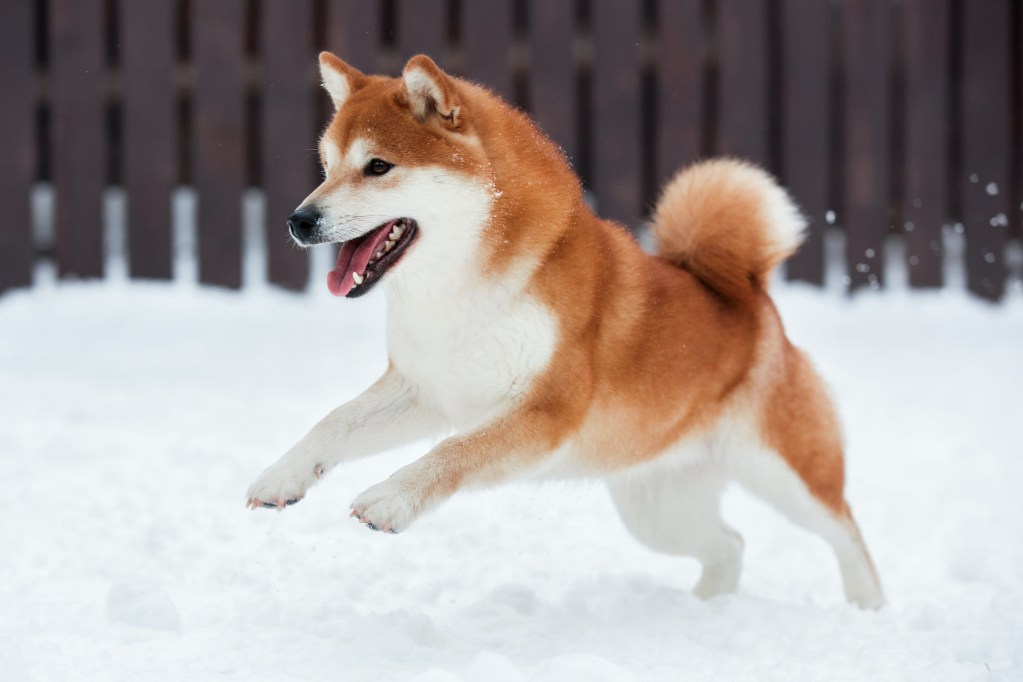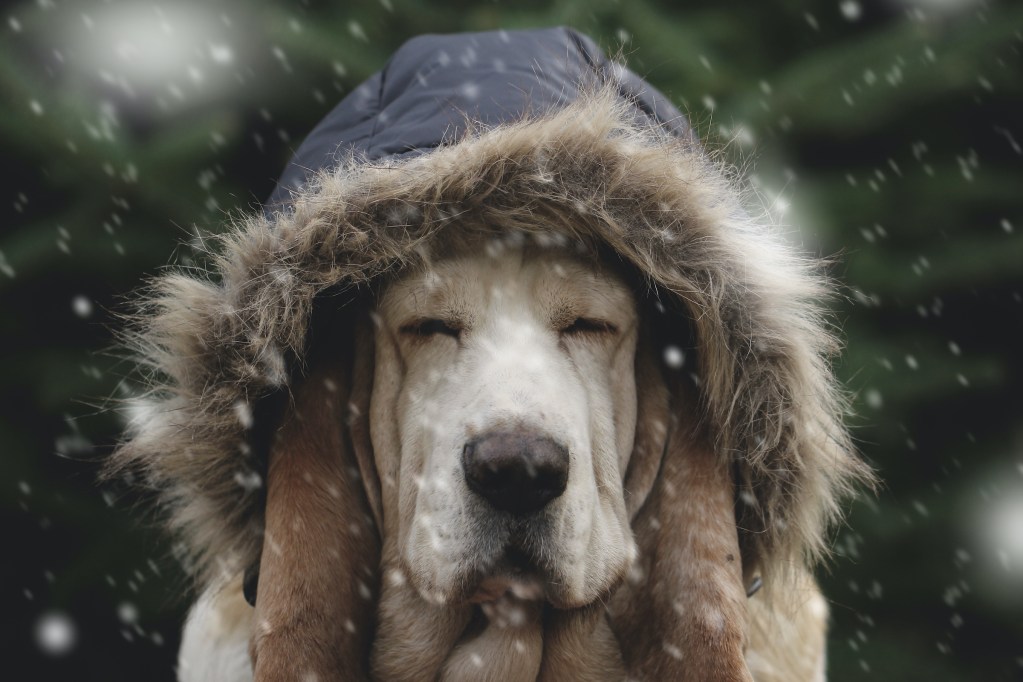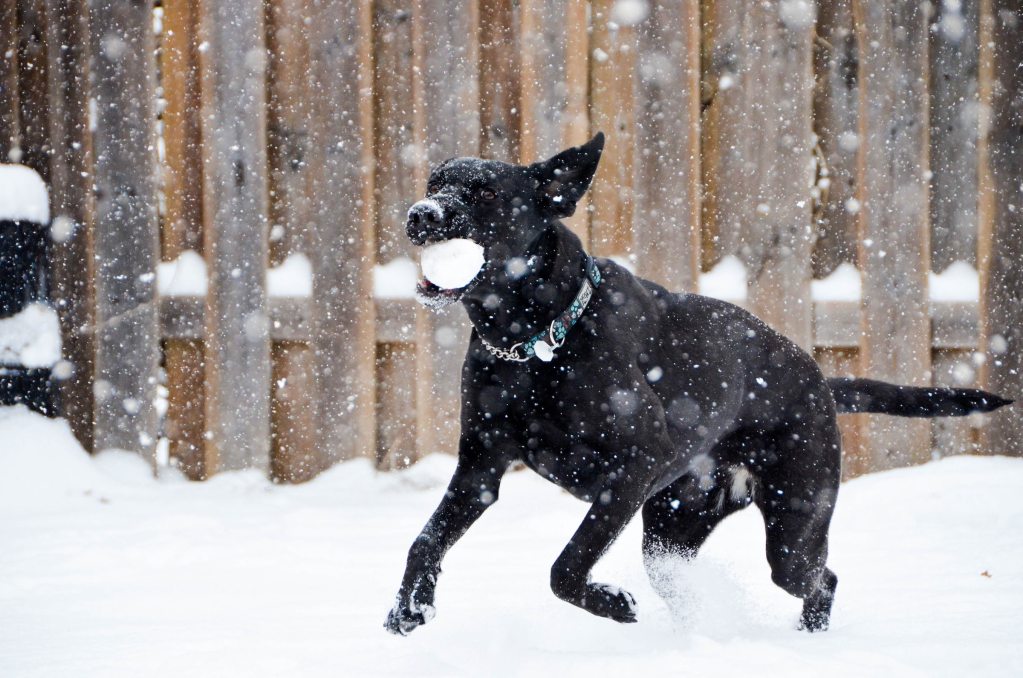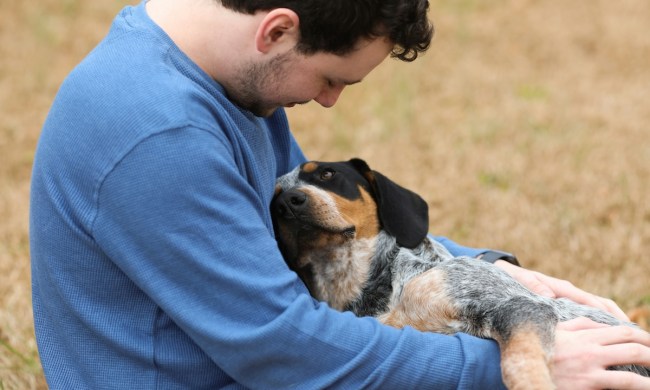
As temperatures plummet this winter, you may be bundling up in layers of jackets, blankets, and hats. Not your pup, though! Since many dogs have thick coats that insulate and give them weatherproof fur, your furry friend may not mind the cold.
Whatever their breed, it’s important to take some extra steps to keep your dog comfy and warm throughout the colder months — including being open to bringing them indoors. No matter how much a pup enjoys the cold, rain, or snow, no dog should be left outside during extreme weather conditions.
Even so, it’s important to know how to keep outside dogs warm in winter weather. It’s about more than their comfort — it’s about their safety! Let’s discuss practical tips and tricks, including if and when it’s safe to let your dog brave the elements.

Can an outdoor dog stay outside in winter?
Whether a dog will stay safe and comfortable while outside in the winter depends on a variety of factors, including the temperature, the weather conditions (rain, snow, etc.), your dog’s fur, their individual preferences, and their outdoor setup.
For example, winters in Southern California can be mild enough for dogs to stay outside year-round, while a Minnesota winter is too much for most pups. A Northern dog breed like an Alaskan Malamute may barely notice the temperature change — they may even love the snow — while some Chihuahuas wear sweaters year-round. Double-coated breeds or those with thick undercoats are best suited to cold weather, though no dog is invincible.
Legally, it can be considered neglect to leave a dog out in the cold for extended periods of time. So, if you have to keep your pet outdoors, make sure to set them up with adequate shelter, food, water, and space. This may even include a dog house heater! Keep reading to find out how to keep your beloved fur baby as cozy as possible while the winter rages on.

How to keep outdoor dogs warm throughout the winter
First things first, make sure your pup is healthy enough to spend time outside in the cold. Puppies, senior dogs, and those with preexisting medical conditions can be at greater risk for cold-related illness, including frostbite and hypothermia.
These are a few of the conditions that can put a pet at risk for cold-related complications, according to the AVMA:
- Diabetes
- Kidney disease
- Heart disease
- Cushing’s disease
- Hormonal imbalances
If your dog seems up to the adventure, it’s time to set up their winter wonderland. Food and water are essential for their well-being, though keeping their water from freezing can be a challenge. A simple tool like a Styrofoam cooler, a tire, or even a ping-pong ball can be enough to keep their water in liquid form, according to the NCRAOA.
As for shelter, you have many options. You can insulate an existing dog house, install a heater, or invest in a heating pad. Even small changes like adding a flap on the doggy door can help keep heat in so that your pet can have a warm and cozy dog house of their own.
Your dog’s bedding can make a world of difference, too, so don’t be afraid to splurge on something that they love. Not only will the fuzzy fabric keep them warm, but it will add an element of comfort and home to the outdoor space.
Whether they’re outside for a while or just for a potty break, some dogs need to wear a winter jacket. This may be after a trip to the groomer, when their fur is shorter, or all the time for short-haired breeds. Be sure to ask your vet and read up on whether your dog needs a coat for the winter because you can never be too safe.

At what temperature should my dog come inside?
Though every dog has their own preference and personal limit, it will become immensely harder to keep your furry friend comfortable when the mercury dips below freezing. Not only do you run the risk of their water turning to ice, but you also may battle harsher conditions, like snow and sleet. Just like people, dogs can also succumb to hypothermia once the temperature drops too low.
Keep an eye on your pup anytime the thermometer reads 20 degrees Fahrenheit or below. If your dog seems at all anxious (pacing, whining, howling, etc.) or uncomfortable, you should consider updating their outdoor heating or bringing them inside.

These are the cold weather-related health concerns dog owners should keep an eye out for
It may seem like dogs are invincible when it comes to cold weather, but even Northern breeds like Siberian Huskies can get too cold. Any dog with preexisting medical conditions, like arthritis, could find that their symptoms worsen with just a few minutes spent in chilly weather. In addition, even healthy dogs can experience frostbite on their paws, ears, or even noses. That’s not to mention the dangers of slipping on ice and snow!
According to the AVMA, ow-riding dogs such as Basset Hounds and Dachshunds may be extra susceptible to the cold due to their bellies touching the frozen ground, too. But that’s not the only danger! Any part of your dog that touches the ground could pick up toxic chemicals such as antifreeze or de-icing products, so make sure to give your pet a good wipe-down whenever they come back inside.
If you do decide to let your dog spend time outdoors, double-check that they are in an enclosed space and have a form of identification on their body. In the rare cases that a dog becomes lost for any reason, a blanket of snow can disorient them enough to get them even more lost. Everything looks pure white, and snow covers most scents — sounds scary!
Remember, your dog won’t necessarily love the winter weather just because they’re a cold-friendly breed. On the other hand, your pup might be a snow-hound even if they belong to a traditionally indoor breed. The best way you can answer the above questions is by paying attention to your individual dog and your best judgment. If you’re unsure about letting your pooch spend time outdoors this winter, ask your vet what they would recommend. A family walk in the chilly weather can be a great place to start!



